Many people have used the EBR 14 in Call of Duty and other First Person Shooter (FPS) games. Rather fewer have used one as it was intended in real life, and fewer still have the same sort of love for the weapon as author Chris Hernandez. For you youngsters reading this, in real life the EBR 14 is actually the Mk 14 Enhanced Battle Rifle (hence the EBR), also referred to as the M14 EBR. The Mk 14 is a battle rifle (and defacto DMR, or Designated Marksman Rifle) chambered in 7.62 x 51mm NATO issued to fill in a couple of effective engagement roles, particularly that of “designated marksman”. The weapon has multiple configurations and close cousins (including both select-fire and semi-auto versions), including the Mk 14 Mod 0, Mk 14 Mod 1, MK14 SEI, M14 EBR-RI, and the M39 Enhanced Marksman Rifle.
The platform has been alternately praised and reviled for its performance, but whatever your stance on the matter, Hernandez loved loves the one he carried with a fierce and terrible love.
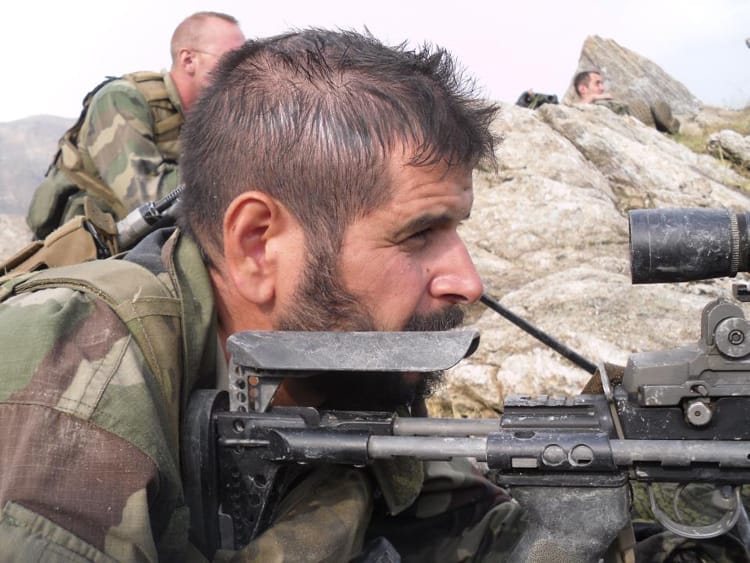
It was by virtue of a rather interesting series of events that Hernandez wound up carrying the M14 EBR — the topic of today’s Throwback Thursday — during his deployment to Afghanistan. He had a, let’s say, ‘unique’ deployment working alongside French Mountain Troops and French Marines, Afghan Army Soldiers, and American Soldiers, Marines, and Airmen, and had the EBR in his hands during some interesting encounters. In this article, Chris explains how he was issued the rifle, what it was capable of, his experiences with it on missions, and the reasons why it will always be his preferred battle rifle — and why he says it’s the most beautiful rifle ever made.
M14 EBR
The Most Beautiful Battle Rifle in the Entire World
There I was, on a mountaintop hide in Afghanistan with a French Marine sniper team, overwatching a valley road full of French armored vehicles. To my left and right French Marines hunched behind rifles, machine guns, and anti-tank missile launchers, waiting for the Taliban to show themselves. We’d climbed the mountain in the dead of night, set positions before sunrise, and were camouflaged and unnoticed as coalition vehicles rolled into the valley.
Immediately below us was an open space about the size of a football field, surrounded by woods.
The French snipers and spotters suddenly perked up and spoke in hushed tones. My French was too limited and they were too quiet for me to understand, but they were clearly excited about something. They jammed their eyes to their scopes and moved their muzzles.
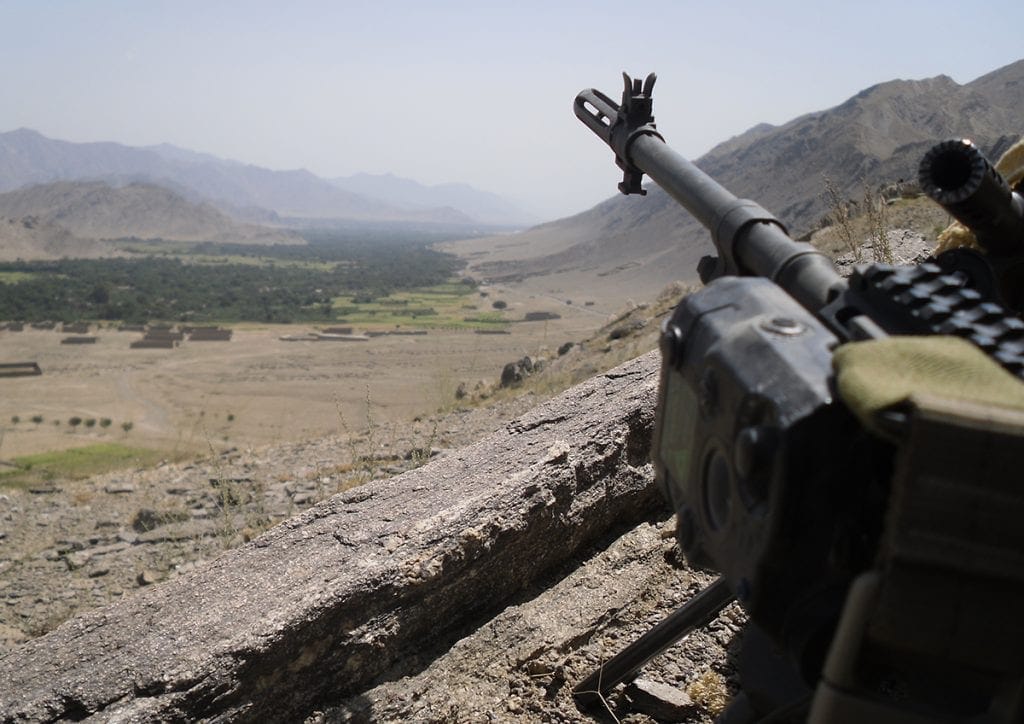
I looked past them, and there they were: four Taliban, walking across the wide-open field, nowhere near cover or concealment. Three had AKs, one carried a belt-fed PKM. Local translators had told us many regular Afghans had AKs at home, but only Taliban carried PKMs.
My heart leapt. It’s an assisted suicide! They WANT us to kill them!
I lined up on a Talib with an AK. The snipers are probably both gonna hit the one with the PKM, I thought. But maybe they’ll let me have one of the others. The range was less than 500 meters, the Talibs had their backs to us, and their leisurely pace pretty much guaranteed I’d hit one even if it took a few shots. My main worry was that the French grunts would hose the whole Talib fire team before I got my kill. The only other opportunity I’d had to whack an identified Taliban had been foiled by a bad call from higher, but this would more than make up for it.
Hell, maybe this was the same guy I didn’t get to kill earlier in my deployment!
I put my trigger finger on the safety of my M14 Enhanced Battle Rifle (EBR), the most beautiful rifle in the entire world. As soon as the team leader gave the word, I’d flick the safety forward, yank my finger back to the trigger, apply the fundamentals, and scratch a 1 into the EBR’s stock. And I’d be the only non-sniper, non-grunt, intel weenie on my block to get a confirmed Talib with an M14.
The M14EBR came to me in a weird way. I’d been an armorer and range coach in the Marine Corps Reserve, then an Army National Guard tanker and Cav Scout. Then I heard about a Military Intelligence battalion that was looking for combat arms troops for an upcoming Afghanistan deployment.
As a tanker, I’d been stuck in a Humvee escorting convoys in Iraq, so running around on foot with an intel team in Afghanistan sounded more fun. I volunteered and went to the National Guard Human Intel (HUMINT) collector transition course. Six weeks after graduating from HUMINT school, I was not only in Afghanistan doing the job for real but was also team leader over two other former-combat-arms-turned-brand-new-intel guys. Plus one grunt who was still a grunt.
Life was good.
But roughly six months before that I’d had the good fortune to attend the National Guard Squad Designated Marksman course at Camp Robinson, Arkansas. We’d trained on M16A4s out to 600 yards, using iron sights and TA01NSN ACOGs. That model ACOG is calibrated for the M4 and not the M16A4, but our instructors chose them because they preferred the crosshairs over an aiming dot or triangle. During the course they had us zero at each hundred-yard line so we’d know exactly where to aim for each distance.
Even with good weapons, great optics and skilled instructors, that SDM course was a killer (the heat and humidity of Arkansas in August didn’t help). I didn’t graduate anywhere near the top, and the instructors made me painfully aware that my beloved Marine Corps marksmanship training had led me astray. But I passed and took my newfound skills to my new MI unit, which already had M16A4s and ACOGS.
I requested one since it made sense for SDMs to carry the same weapon and optic we’d trained on. My unit said no; they’d give us M14s with real scopes, and range time to become proficient with them.
When we left for Afghanistan months later, I still carried a regular old M4. We’d never gotten the promised M14s, or training, and I couldn’t convince anyone to just do the sensible thing and issue us M16A4s. I made peace with my M4, and set to work learning my area of operations.
Then, about three months into my deployment, two M14EBRs with Leupold MR/T scopes unexpectedly showed up.
I set them aside. I’d never trained on a variable-power scope before, and wasn’t about to try to learn on the job. I took the rifles to our little firebase range to familiarize myself with them once, took one to a remote outpost just for the hell of it, and let one of my French buddies carry one on a patrol, but I didn’t carry one myself. It didn’t make sense.
Then, halfway through my deployment, the French Mountain Troops I initially worked with were replaced by the French Marines. I heard the Marines had a sniper team. One night I sought out the French CO, found him at one of the firebase’s three bars (the French had tons of alcohol on deployments), and asked if maybe his snipers could give us a tiny bit of training on the EBR and its optics.
“Oh yes,” he said. “The sniper team leader is right here, and they’re training at the firebase range tomorrow. I’m sure he’d be happy to take you along.”
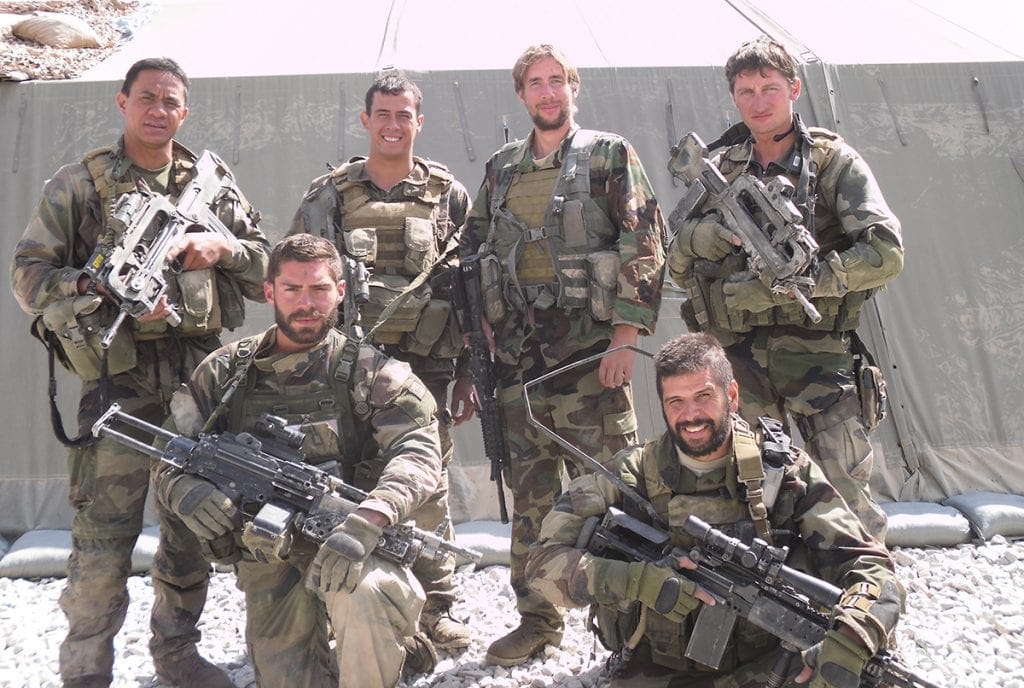
He called the team leader over, who enthusiastically agreed. We had a fun range session the next day, and my Joes and I even got to fire the French PGM .50. I also learned the basics of our EBRs; they couldn’t explain all the complexities of the scope, but I learned that if I zeroed the crosshairs at 300 the first dot below it would put me on at 500, the next one at 700, and the last one at 900.
On that first day, with only basic half-French/half English instruction and perfect range conditions, I was able to make shots on a torso-sized rock at 880 meters more or less consistently.
More importantly, the French snipers hit it off with my team. They invited us to dinner at their tent that night, then invited us to come with them on their next mission. This led to some of my team and I regularly embedding with the snipers, acting as communication and intel liaisons between French and American radio nets.
I always brought along my beautiful M14EBR, just in case. Then came that day on the mountaintop, when I watched four Talibs practically carrying neon “Shoot me” signs, and knew my and my EBR’s time had come.
With the possible exception of the Garand, the M14 is the most American of all American battle rifles. Many consider the M14 to have been born obsolete; it was basically a big, heavy, hard-hitting, updated World War II rifle, brought into service when the world was downsizing to lighter weapons in smaller calibers for a different kind of war.
But, much like the M1911, the M14 is just such a work of lethal art that our enemies were undoubtedly proud to have been killed by one.
The lines of the M14’s blue steel, tone and grain of its wooden furniture, the symmetry of the elongated compensator, solid ten-pound heft, and most importantly its accuracy, made it as classic as it is deadly.
The M14 entered US military service in 1959 and was replaced by the M16 during the Vietnam War (although the M16’s early failures led some Marine units to request their M14s back), and was the basis for the M21 and M25 sniper rifles. Old wooden-stock M14s were brought back into service to help with the long engagement ranges of Operation Iraqi Freedom, but something better had been in the works since 2000: the accurized, reliable, modular M14 Enhanced Battle Rifle.

As with all military weapons, multiple versions and iterations were produced for various branches and units. But the core of the EBR is a shortened M14 barrel and standard action in an aluminum chassis with collapsible stock, Harris bipod, and Picatinny rails. With the stock collapsed, mine was about the same length as an M16.
Unfortunately, the Leupold MR/T, red dot mounted above the scope, Surefire weaponlight with IR filter, PEQ-15 IR illuminator/aiming system, and CMI 25-round magazine, brought its loaded weight to 18.5 pounds. Despite the EBR being much heavier and somewhat more awkward to carry than a standard rifle, before long I felt naked without it.
Prior to the day on the mountain, I’d once had another Taliban in my sights. The French platoon leader wasn’t sure he was an enemy and denied us permission to fire (he was later seen crying and slapping himself in his tent while screaming Why did I do that?). On a different mission during a night movement through a bazaar with the French, I used my M14’s IR weaponlight to light up roofs and windows, which the French really appreciated; their FAMAS rifles didn’t always have rails for lights and optics, and I once saw a French officer with – no joke – an Aimpoint duct-taped to his rifle’s carry handle.
On another occasion, a patrol was ambushed about a kilometer away. Unseen Talibs kept shooting at the Kiowas that arrived to cover them. We thought we identified the compound the Talibs were shooting from, and from 800 meters I marked the compound with tracers for the Kiowas.
But I rarely saw the enemy, and if they were shooting at us I generally saw nothing at all. Other than dust from muzzle blast ONCE.
But now I had four identified enemy, in the open, in broad daylight, taking what had to be the last few steps of their lives. I centered the crosshairs on my target’s upper back, breathed in, and prepared to take out my very first enemy. And then, out of nowhere, we got hit. Hard.
No, not by the Taliban. This was something even worse. We got hit by…the dreaded Good Idea Fairy.
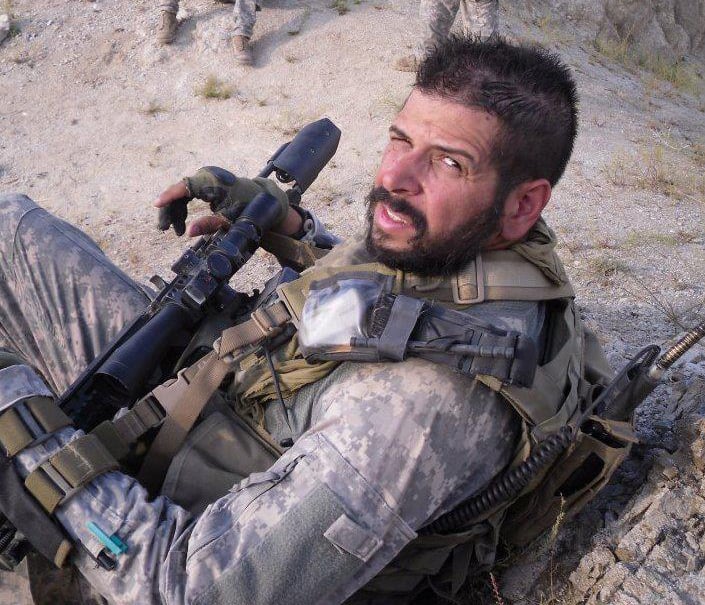
The French company commander was a great guy, but he was an officer. When he saw those four Taliban he didn’t think Kill them all! Instead, the Good Idea Fairy whispered to him, If you wait, more of them will gather together. Then you can hit them with everything you’ve got.
So the dejected, disgruntled sniper team leader grumbled at me not to shoot, the snipers and I dropped rifle stocks from our shoulders in disgust, and the four unsuspecting Talibs leisurely strolled out of the open and into the woods, headed toward the French armored vehicles. And of course – OF COURSE – they didn’t gather into a larger group, and we never saw them again.
My beautiful M14EBR and I later had another frustrating missed opportunity, but we never got that 1 scratched into the stock. When my deployment ended I turned my M14 over to our relief, and today I worry that my beloved American iron eventually wound up going to “moderate” anti-ISIS fighters in Syria.
Which pretty much guarantees that ISIS got it.
No matter. I still love that rifle that I lugged around Afghanistan, and someday I’ll build one just like it. Until then, I’ll just have to make do with my memories.
And with the anger I still feel at that damn Talib I should have been able to take out with the most beautiful rifle ever made.
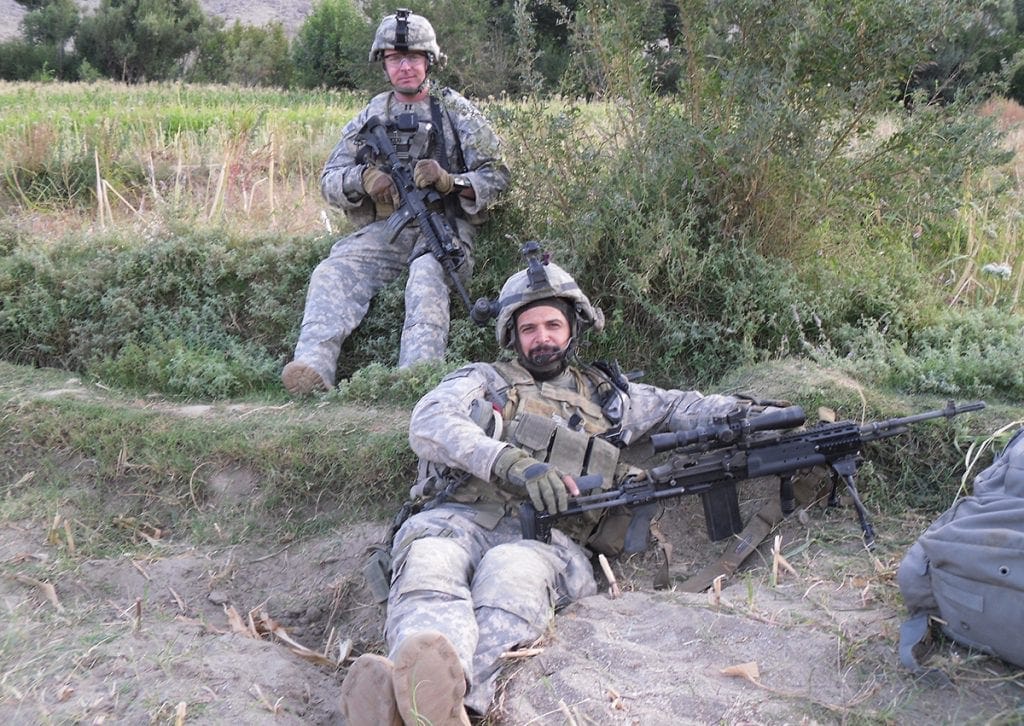



Pingback: M14 EBR: A Love Story | Breach Bang Clear()